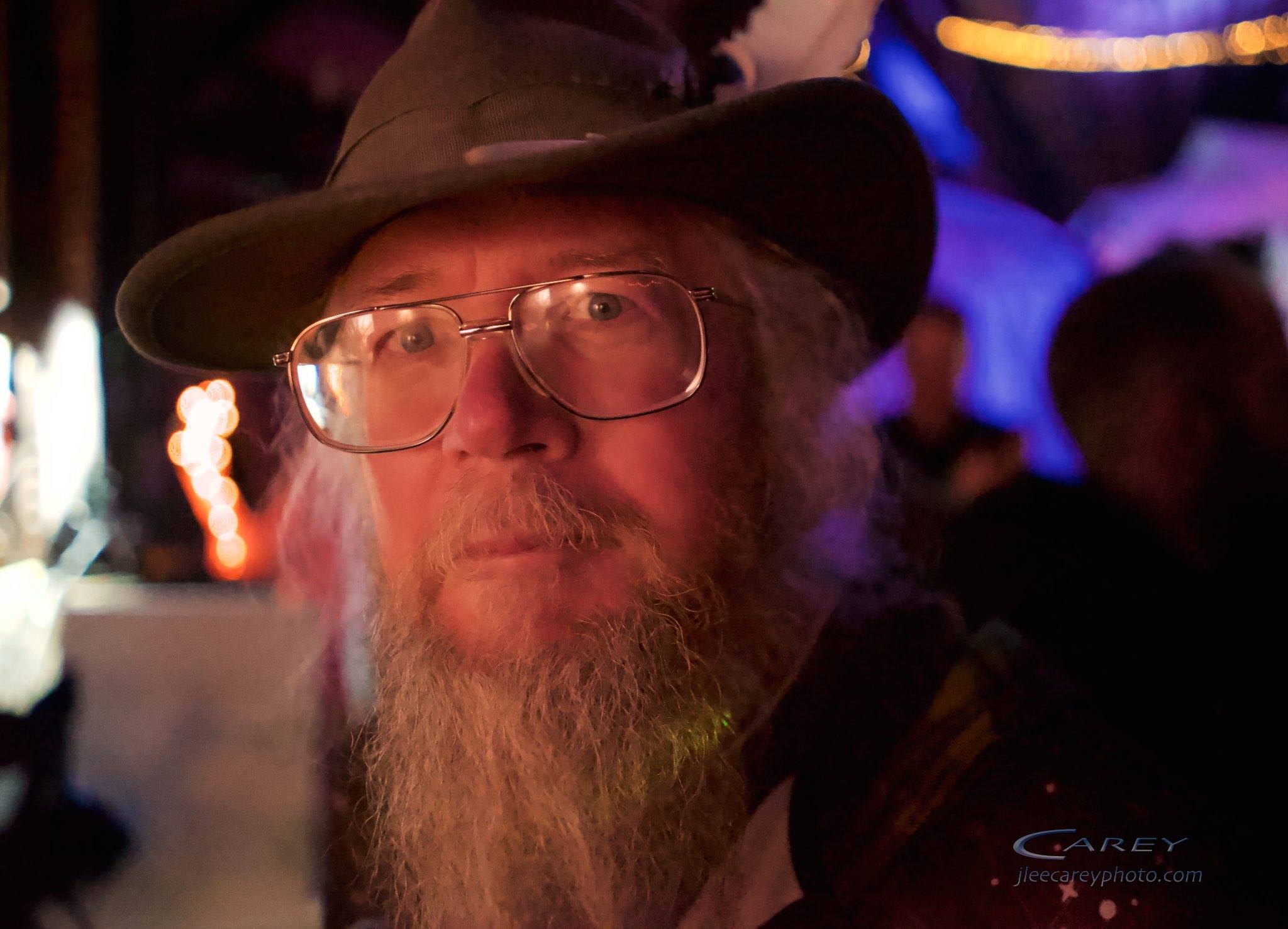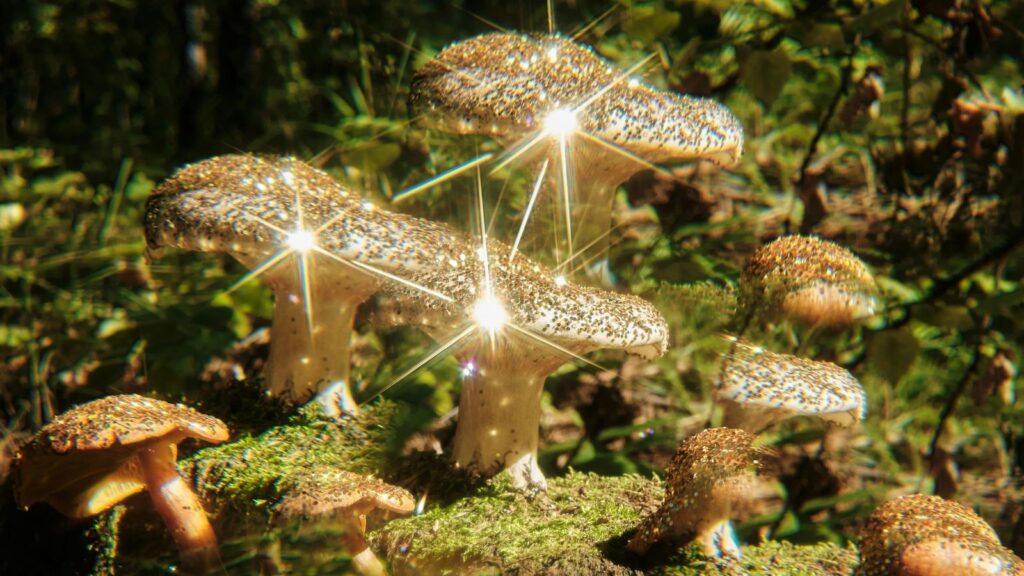Air Force Security Officer, bouncer at an infamous punk club, accountant, Rainbow Warrior, alchemist, artist, and driver of a truck that brought heating and shelter to Standing Rock – all of these incredible things describe Water Protector Daniel Garber.
For many of us the hope of Standing Rock seems far away in time, but we’re only a month past the first anniversary of the arrival of the veterans. With the election of Trump, much of the promise we saw in the courage of the Water Protectors seems like it belongs to a bygone era. But the election made Standing Rock more important than ever. Native Americans have been dealing with what we today call “Trumpism” since the beginning of their interactions with the immigrants who sailed here from Europe.
One of the most powerful lessons of Standing Rock was the example of so many tribes and so many people from such different backgrounds uniting to protect the water. The history of this unique event will be detailed, discussed, studied and archived for many years to come. In this interview, we meet a man who is a great example of how eclectic the Water Protectors and their supporters are. I’m proud to interview Daniel Garber for Reality Sandwich.
Tamra Lucid: How did you become interested in alchemy, astrology and related arts? Is that how you got the nickname Wizard?
Daniel Garber: I spent many years on my schooling, and then about ten years in the entertainment business. For me those years were about adventure. I wasn’t tied down so I just went for whatever opportunities presented themselves. Along the way I was aware of the significance of listening to my intuition, but I wasn’t very good at paying attention to it. Learning that skill would become part of my path. I landed a gig to manage a big “New York Style” nightclub a couple of blocks from the White House in Washington, DC. But the project was under construction and I had six months to kill. I ended up on the couch of a Wiccan Priestess who initiated me into her pagan practices. She was a witchy woman and worked in one of those metaphysical stores in Baltimore. She also practiced Native American Spirituality and invited me to attend a “Yuwipi” on a Lakota medicine man’s farm outside of Baltimore. That was really the serious beginning of my spiritual path. Twenty-six years ago. Along the way I immersed myself in astrology and tarot. When I moved to Seattle in 1995 I found myself led to several esoteric societies and learned qabalah in a more formal way. I apprenticed with a real alchemist for years and produced and edited his first book — “Real Alchemy: A Primer of Practical Alchemy” by Robert Bartlett, 2006. I had a regular working magical group with students. They started calling me “Wizard” and so that nickname stuck for a decade. I finally lost it this last summer after Spirit advised me to at the sun dance.
How did you first become involved with the Native American spiritual path?
I was invited to a “Yuwipi” in 1991. It is a Lakota healing ceremony, where the medicine man is wrapped up inside a bag. Like Houdini, his job is to escape from his confinement. The room was totally dark and as the spirits were called in I could see spirit lights. When the lights were turned back on he had escaped from the bag and the patient was healed. Then his pipe was passed around to be smoked. That was the first sacred pipe I had ever touched, and it resonated. I knew these ways were for me.
What is Cascadia Arts and Music Festival and what’s your involvement with it?
Cascadia is the name for the Northwest territory that seeks to separate itself from the United States. The music festival is for like-minded people who get down in the Pacific Northwest Rain Forest with good music and good art. The music is primarily EDM. There are workshops and live painters. It’s a four-day good time in the woods north of Seattle. I’ve had the privilege of showing my art and sculpture there for three years now. The festival was teaching me camping skills that would later come in handy on my trips to Standing Rock.
What is Ecotopia and who is Danielle Gennety?
Danielle was the “mayor” of the Ecotopia camp within Cascadia festival. She took me in to the camp a couple of years ago. She’s an expert in promoting sustainable alternative life styles. Very early on she was agitating to go to the assistance of the Lakota people at Standing Rock, and was arrested while protecting peaceful grandmothers who were in a sacred pipe ceremony at Standing Rock on October 27th, 2016. She spent four days being bused around various North Dakota jails. Afterwards she testified about the mistreatment for a U.N. Investigation. It was Danielle’s story that solidified my resolve to go to the aid of the Lakota people myself.
What’s a tarpee?
There were many families at the Oceti Sakowin (7 council fires) camp who had no housing, with winter rapidly setting in. A Salish indigenous man named Paul Cheoketen Wagner conceived the idea of fabricating a temporary structure with a shape similar to the native teepee, but using materials you can buy at the local hardware store. Instead of teepee poles you use twelve-foot 2×4’s. Instead of buffalo hide or canvas, you cover it with an 8 mil UV- resistant plastic tarp. Put a wood-burning stove inside with a 6 inch chimney and you have a structure that could comfortably sleep five and twelve in a pinch. The Lakota natives were skeptical of the tarpee’s ability to survive the brutal Dakota blizzards. They named them with the pejorative term of “tarpee.” The most obvious concern was whether they would stand up to the 70 mph winds. After erecting over fifty of these tarpees, to my knowledge not a single one blew over or ripped open from the wind. Another concern was that they would be warm enough. I can testify that they were warm and comfy in sub-zero temperatures. I rode out a blizzard with sub-zero temperatures and sixty mph winds, in comfort. There was a worry that the ice would undercut the lodge by coming in thru the ground. I didn’t see that happen at all. The only tarpee casualties we had were the two that were bull-dozed at the North Camp on October 27th.
What’s the Backbone Campaign?
Backbone Campaign is a well-known Pacific Northwest environmental activist group. They are famous mostly for their kayak campaigns against Shell Oil Rigs. Backbone partnered with Paul Wagner to get tarpees and wood stoves to Standing Rock before the bitter winter set in, by offering the use of their 22 foot diesel panel truck. They needed reliable drivers. That’s where I came in.
How did you get involved as the driver of the truck bringing heaters and tarpees to Standing Rock?
When Danielle needed a driver for her trip to Standing Rock, I volunteered. But I had a couple of conflicting commitments so I missed that opportunity. Shortly thereafter I heard the call for volunteers to drive the Backbone truck with forty tarpees and wood stoves. That was early November, and my first trip to Standing Rock. A few weeks later, there were 22 more tarpees and stoves that needed to go and I was offered a second trip. That trip was partnered with the Veterans March on Standing Rock. (I’m a veteran.) Unbelievably, I was offered a third trip in January to deliver eight tons of donated fire logs to the Standing Rock reservation.
What was it like as a veteran attending the ceremony where Clark Jr. asked forgiveness for his unit the 7th Cavalry (the unit with perhaps the bloodiest history of fighting Native Americans)?
It was serendipitous from the outset. There were in excess of 4,000 veterans in the camp, but only a small number of those heard about the ceremony the Lakota nation planned to thank the veterans for coming. I happened to hear of it the night before while sitting at the Oceti Sakowin sacred fire. Only about three hundred vets made it to the Prairie Knights Casino for that ceremony. The elders present for the ceremony were not the political leadership of the tribe. They were the spiritual leaders of the Lakota Nation — Chief Arvol Looking Horse and his brother Ivan. Faith Spotted Eagle. Phyllis Young. Dave Swallow. And Chief Leonard Crow Dog himself. It was very emotional for all of us present. We had all endured incredible hardships just to make it to that room at that time. A brutal blizzard was striking outside. Spirit was plainly at work. If you had the intuition you could feel Its presence. The ceremony unexpectedly turned into something more than the tribe thanking us. Representatives of the 7th Cavalry stepped forward and began apologizing for warring on their people for two hundred years. They spoke for ALL of us. You could hear a pin drop. And then, Crow Dog FORGAVE them, and all of us. It was extremely moving. Probably the most significant moment of my life so far. I consider it to be a historic moment, and a sign of how practicing the Lakota Ways can save us all, as the Rainbow Prophecies predict. Forgiveness is next to godliness, and so Christlike. For these people to do that proves to me their spiritual and moral superiority over the dominant culture. We have the audacity to call them savages.
What were the other most moving moments you experienced at Standing Rock?
The two inipi sweat lodge ceremonies I attended were memorable. The day I left in February, the last forward camp (Last Child) was raided by state and federal authorities. It was sad to see, but a sign that it was time for us to leave the camp, thru the one-way police blockade. The midnight rendezvous on the snowy plains of South Dakota with Ivan Looking Horse was memorable.
What were your experiences with law enforcement at Standing Rock like?
We avoided law enforcement on our first trip into the camp by taking evasive southern routes. The North Dakota Highway Patrol had been directed to intercept vehicles bringing in supplies from the outside, and threatening us with a $1,000 fine. I left the camp the first time in the company of the Cascadia bus. The two of us were convoying. The police picked us up at Mandan and escorted us into Bismarck, where I had to pick up some snow chains. They were reinforced there by at least two dozen police vehicles and unmarked vans. This army escorted us out of town as we drove west on I-94. They didn’t break off for about five or ten miles. I felt that was an interesting show of force from what is supposed to be a domestic police force dedicated to Serve and Protect, we the people. We watched from afar as the authorities wiped out the Las Child camp, and later on I dealt with the police at the one-way road block. They told me we would not be allowed to return… and that they knew who I was.
You were celebrity bouncer at the Los Angeles underground club Scream where Jane’s Addiction and the Red Hot Chili Peppers began their careers. What are your most fond memories of those days? What other punk adventures did you have? Were you ever scared?
After serving in the Security Police of the US Air Force I was uniquely qualified to be a punk rock bouncer. I started doing that in 1983 at the famous 9:30 Club in DC and worked more punk rock shows than I can count. A partner and I broke up a riot that took place in the middle of a Black Flag show in 1984. I moved on from there and worked at Limelight and Area in New York City. I went to L.A. seeking fame and fortune and found both in my own mind at Scream in L.A. I also worked the door at Club Lingerie and at several “one night wonder” clubs. I worked stage security for both Jane’s Addiction and Red Hot Chili Pepper shows. I had the bright idea of exposing the east coast to the wonder that was Jane’s Addiction, so I produced their first east coast show on a cold and snowy Sunday night at the Limelight in NYC. No one in NYC knew who they were so it was an intimate show. The climax of that show was the encore where most of the members of The Cult (Ian Astbury) got on stage with Jane’s and jammed. This was January of 1987, about six months before Jane’s was signed to a label.
What did you learn serving in the Armed Forces? And how did you get from there to the front door of Scream?
Mostly I learned how to grow up and be a responsible adult. Afterward, I had to unlearn some of that. It was worth doing because of the self-confidence it built in me and it also helped me to get an education. After my honorable discharge, I went to George Washington University in Washington, DC. It was there that I was led to the 9:30 Club, which was the epicenter of the Washington, DC harDCore scene, which fostered and incubated Minor Threat, Fugazi and all of the Dischord bands. It was also the music school for Dave Grohl, who went to his first punk shows when I was working the door. Later on, I was the first licensed manager for the Black Cat live music venue, which was partly owned by Dave Grohl and Ian MacKaye. The story of how I got the 9:30 Doorman job is a fun one. I was hanging out at the happy hour bar one day when I noticed a sign in the window that said they were looking for a doorman. It seemed that the night before there had been a fatal shooting at the front door of the club. It was a Yellowman show. Yellowman was a rastafarian act, and the rumor was that it had been a rastafarian mafia hit. Fact is, it had happened right in front of the doorman and he had seen the murderer. Fearing for his life, the doorman quit his job on the spot. That left the fortuitous opening. I sat at the bar and contemplated, then decided to go for it. You have to recognize and take advantage of your opportunities when they arise.
How did you become an artist? What attracts you about the materials you use most?
My mother was an artist and taught art from elementary to the college level. I was raised to be an artist, but my father wanted me to do something practical. For him that meant making better money than he was making. My college career started out practical. I was a Business major. One semester at George Washington University in DC I had all liberal arts classes. The dean brought me in and told me that would not do. So I changed my major to Philosophy and was happy ever after. I have suffered from this artificial duality to this day – the separation of art and science. It is still not reconciled for me, but I gave up the business world about twelve years ago and have dedicated my life to art as a full-time endeavor since then. This has meant making the pursuit of money not one of my goals. As a result, the artist in me flourishes side by side with the spiritual seeker. Spirituality for me can not live with money. I have been taught this principle from day one. Chief Frank Fools Crow said that you can not charge a fee for spiritual healing work. He never charged a fee. But a spiritual person needs to eat. So he depended on donations in kind. Money can and does corrupt the work. And so we have to be careful about that. For me, my art is very closely connected to my spiritual work, so money is not high on my list of aspirations. This hearkens back to those old straight edge punk days – when we had such disdain for those who “sell out.” Like, Jane’s Addiction perhaps?
If you had to recommend to a time traveler a decade during which you lived as the best time to visit America, which would you suggest, and why?
For me the eighties was a magical time. I would say that time, when punk rock was young and naive, and we had Reagan to hate.
Read Daniel‘s account of his Standing Rock experiences here:
Backbone Campaign:
http://www.backbonecampaign.or
http://www.backbonecampaign.or


















